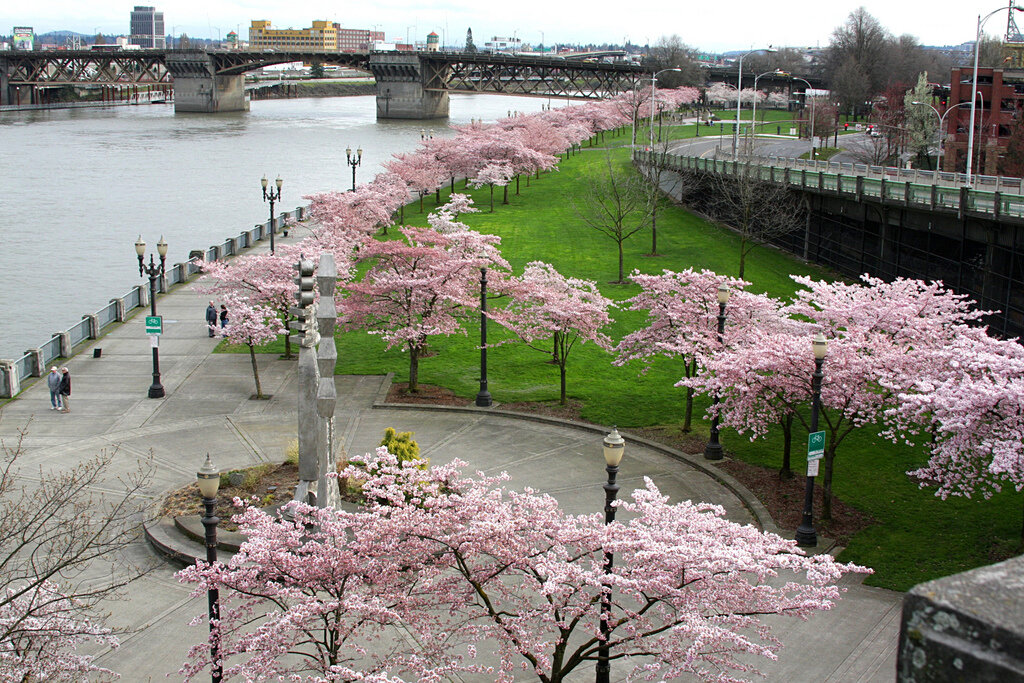You Can't Achieve Jane Jacobs Ends with Robert Moses Means—But What If You Don't Have a Choice?
This article is part one in a series on top-down power, and how a Strong Towns advocate might use existing top-down programs and federal funding streams as tools (in the short term) for boosting local resilience.
Jane Jacobs. Image credit.
I recently heard a major fault line within urban planning described quite simply: "Was the problem with Robert Moses than no one person should have had all that power, or that Robert Moses should not have had all that power?"
In other words, was the problem with New York's infamous master builder—the man chiefly responsible for the freeways that slice and dice the city's neighborhoods—the centralized development and imposition of transformative building and infrastructure plans? Or was the problem the nature of the specific plans being implemented, and the specific priorities of the autocratic official pushing them through the bureaucracy?
It's actually a false choice; the correct answer is an easy "both of the above."
We've often said at Strong Towns that you can't achieve Jane Jacobs ends via Robert Moses means. The problems created by bad centralized policies imposed at a large scale won't be resolved by simply imposing better centralized policies at a large scale.
As usual we're invoking Moses and Jacobs, who have attained the status of Greek gods in urban planning discourse, less as specific people who acted in specific political contexts, and more as broad archetypes for two different approaches to planning. It's the stuff of opera (no, literally): the insurgent outsider versus the power broker, the grassroots organizer versus the technocrat, the human scale versus the inhuman scale, the complex and emergent city versus the master-planned one.
"Don't use Robert Moses means" makes a nice soundbite, and I think it's far more true than not. Every centralized program falls victim, sooner or later, to its own unintended consequences. There will always prove to be things the master planners didn't know they didn't know, complex chain reactions they didn't anticipate or understand. You will always do at least some inadvertent harm when you apply a set of rote solutions to many places, irrespective of local context.
When Urgent Problems Warrant Urgent Action
And yet, that admonition should make you uncomfortable. It's easy to accept the case against the use of centralized power in abstract, general terms. It's a lot harder when there are people struggling, the consequences of inaction are dire, and those who possess centralized power could use it to help, much faster and at a more meaningful scale than anybody else can.
Take perhaps the most on-the-nose scenario we can posit: is it right to use Robert Moses means to undo the very harms created by Robert Moses?
(To be clear, when you hear “Robert Moses” here, you should be substituting in your mind the thousands of people who planned and built inner-city freeways, helmed Urban Renewal authorities, and otherwise carved up North American cities along the template that Moses established in New York. The project with which Robert Moses is synonymous had many architects—and it’s also important to recognize in hindsight that it was broadly popular and uncontroversial at the time!)
Hundreds of ill-conceived inner-city freeways built in the mid-20th century still exist in our cities, and every day that they sit there, they continue to suck wealth out of the neighborhoods they slice apart. Every day that they sit there, they reinforce racial and class barriers that were, in more cases than not, cemented into place by their very construction through the poorest and least white (and thus least politically empowered to resist) neighborhoods.
Robert Moses. Image credit.
Every day these freeways sit there, they continue to give kids and adults asthma and other respiratory ailments at alarming rates. Every day they sit there, they remain a powerful inducement for long-distance car commuting, spewing carbon emissions into the air—and there's plenty of reason to think the timeline for decisive action on carbon emissions should be measured in years, not decades.
What would it take to get rid of these urban freeways en masse?
Removing a freeway through local, bottom-up initiative is an extraordinarily complex proposition, doubly so for a city that's broke. It could easily take decades for grassroots advocates to build the coalitions, the community support, the sway over enough key decision makers to even put the issue on the table politically. And even once there's something resembling a local consensus, the city must work with potentially recalcitrant agencies at higher levels of government, from the state DOT which would have to carry out an actual demolition project, to the federal agencies which have oversight and control many of the necessary purse strings.
We can spend decades incrementally building the critical mass to unleash a wave of independent highway removals across the nation. Or, this line of thinking goes, we can have the federal government put a heavy thumb on the scale—and why wouldn't we? This isn't a case of pushing an untested theory or planning fad, after all. This is a case of correcting a historic mistake in the face of overwhelming evidence that it was one.
A recent Senate proposal (tucked into a much larger spending package) would dedicate $10 billion to a pilot project to remove urban freeways from areas with a high concentration of low-income residents and/or people of color. Much of the money would go to community engagement and on-the-ground study of these corridors, a direct effort to avoid copying the mistakes of the freeway-building era, when these plans were drawn up by remote, unaccountable bureaucrats.
In the best case scenario, dangling the grant money changes the political calculus in dozens of cities where these debates are already happening. In places where there is already a local coalition pushing for freeway removal, their advocacy gets a major boost from the agenda-setters in Congress and at USDOT—but their voices are still heard when it comes to getting the local implementation right.
I am more than a little sympathetic to this proposal. I think that on balance, the benefits of jump-starting the undoing of the worst planning mistake of the 20th century, before we have to wait another generation, outweigh the risks of overreaching. But the risks of overreaching are very, very real.
The Case Against Moses-ism... Even for a Good Cause
Some places are absolutely ready for freeway removal, and the outcomes if the bulldozers fired up tomorrow would likely be fantastic. But in most places, a lot of good work that could happen, that would lead to better outcomes, will be short-circuited. A lot of value will be left on the table. And that's the best-case scenario, not the worst.
It is not the slightest bit hard to envision scenarios in which cities rushing to do freeway removal end up replicating the harms of the Robert Moses era rather than undoing them. This would happen because, in grabbing at an available pot of federal money while it's there, a city ends up undercutting the careful work of cultivating the local capacity to do something better with that land. The insights and ingenuity of those who live nearby go untapped. Their needs go unmet. Outside investors cash in on development that is transformative rather than regenerative, unconnected to the social or physical fabric of what came before. This displaces an existing community.
Or nobody develops anything, leaving a bleak void. Maybe the domino effects on the transportation network reverberate throughout the region, precipitating a fire hose of cataclysmic money in some newly desirable areas and an investment drought in others. Planning energy and development interest focus on the newest hot neighborhood... and organic revitalization that was just taking off in a disinvested area two miles away stalls out. If you can't envision these scenarios in a place you know well, I think you lack imagination.
Tom McCall Waterfront Park in Portland, Oregon. The park was created after the removal of Harbor Drive, and is considered a milestone of the freeway removal movement. Image credit.
You can also probably envision how to counter these scenarios: with grassroots energy, with a community of entrepreneurs and incremental developers ready to work wonders in the place where a highway once stood, and the commitment of local planners and officials to support their efforts with appropriate zoning/regulatory changes and technical support.
But that work is careful, it's cultivative, and it is absolutely necessary that its roots be local and bottom-up, or it doesn't work. You can plant a tree farm, but you can't simply plant a forest. A forest is something that has to grow.
This challenge is impossible to separate from the mechanisms and the scale at which we plan. Top-down planning via distant bureaucracies and massive budgets is always going to prize efficiency, legibility, and standardization—things we can measure and score—over organic feedback, messy experimentation, and deep engagement with people. And this is true regardless of the intentions or ideologies of those doing it.
For example, if you set up a grant program to fund innovative grassroots placemaking projects, over time you are likely to see applications that look more and more like each other, are less innovative, and are also less informed by unique local contexts. Why? Because your applicants, in the hope of funding, are going to conform their projects to the specifications of the grant and to what they can glean from studying past winners. They're going to learn to game your system.
The bias of centralized programs is inherent to centralization. It reared its head in the creation of the interstate highway system. It will also rear its head in efforts to correct the mistakes associated with building an auto-oriented continent. Chief among those mistakes was that we took a flawed template—one that was immensely popular, uncontroversial, and bipartisan at the time—and we applied it everywhere. Across a whole continent. By the time it was possible to take stock of its flaws, the damage was irreversible.
Do we think we've got it all right this time? That we don't have blind spots?
We Don’t Live on Forest Time
But then: does this mean we eschew the federal spending bill and the USDOT grant program altogether, in favor of biding our time, even if it means the freeway persists for an extra 20 or 30 years?
That doesn't sit well with me. A forest takes generations to grow. But we don't live on forest time.
Our cities may be playing an infinite game, but we, their inhabitants, are not. We are all playing a painfully finite one. I want my great-grandchildren to have wonderful, prosperous, human cities to live in—but I want myself and my neighbors to have that too.
This post is the beginning of a several part series in which, I intend to explore—using this example and others—how a Strong Towns advocate might view the proper role of existing top-down programs and federal funding streams in boosting local resilience in the short term, even as we keep our eyes on the prize of a longer-term future in which power is something we grow from within our communities.
In the next installment, I’ll suggest a short list of ground rules for when using existing, centralized mechanisms to achieve change is capable of doing more good than harm.
Cover image via Flickr user Wally Gobetz








In 2016, Portland enacted an Inclusionary Housing policy affecting buildings of 20+ units. The result? The city now has a bunch of new 19-unit buildings. Let’s talk about intervening in a system as complex and adaptive as the housing market.